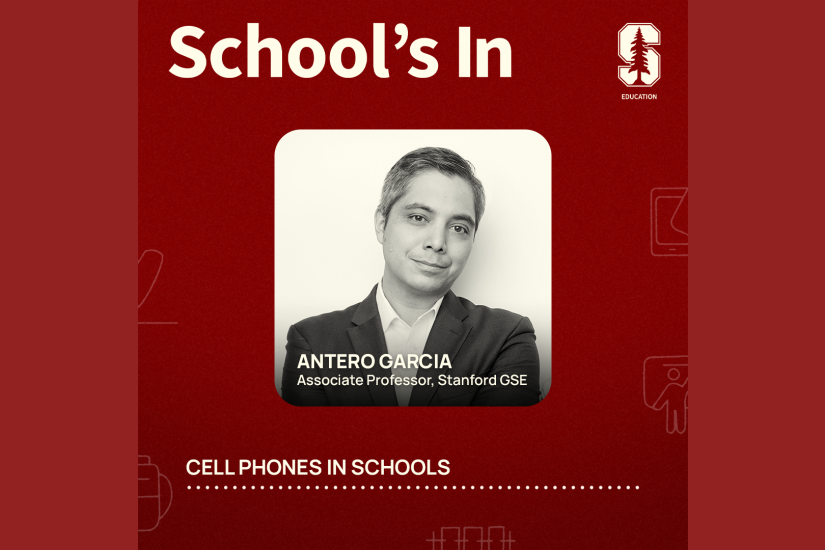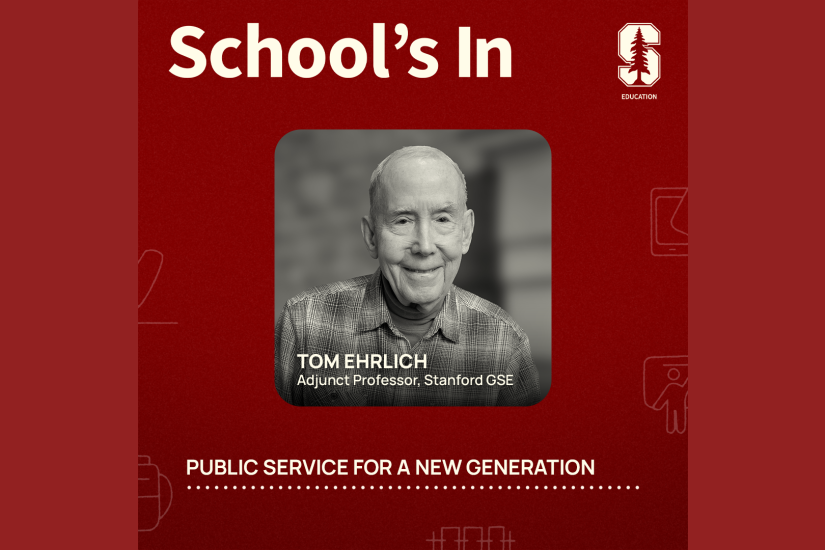
Bringing AI literacy to high schools
It’s the start of English 11 class at Birmingham Charter in the San Fernando Valley of Los Angeles, and teacher Lindsay Humphrey has planned an activity to show how computers experience sound. She will play a song and then ask the students to guess which visual waveform represents the music they heard. The point of the lesson: Music is one of many examples where computers “see” differently from humans. For many in the class, this will be a first exposure to artificial intelligence (AI) technology, and she’s excited to see how they react to it.
Humphrey is a Stanford Hollyhock Program alum, and her lesson plan is one example of the type of resources coming from the CRAFT (Classroom-ready Resources about AI For Teaching) project in the Graduate School of Education with support from Stanford HAI, Stanford Digital Education (SDE), the Stanford Accelerator for Learning, and the McCoy Family Center for Ethics in Society. CRAFT’s purpose is to create and freely distribute resources about AI that high school teachers can use in their teaching.
“At my school, there are a couple of other teachers who are excited about AI, but the rest are worried the sky is falling,” Humphrey says. “Keeping kids from cheating is not the issue. We don’t need to fear this technology. Let’s unpack the bias, bring it into the light, teach it, and show that we can mitigate it. Thanks to the CRAFT program, I have the tools to be an AI thought leader at my campus.”
AI awareness for all
The idea to mobilize Stanford education and AI experts to create public curricular resources originated with Victor Lee, an associate professor in the Graduate School of Education, faculty affiliate of Stanford HAI, and director of the CRAFT program. Lee says two imperatives shaped his thinking about AI in an education context: We must help young people to prepare for a changing economy and workforce and to understand how AI affects their lives.
“Regardless of whether someone anticipates being in a technical career, being an informed person in society means understanding AI,” he says.
To address these two imperatives, all high schools need access to basic AI tools and training. Yet the reality is that many underserved schools in low-income areas lack the bandwidth, skills, and confidence to guide their students through an AI-powered world. And if the pattern continues, AI will only worsen existing inequities. With this concern top of mind plus initial funding from the McCoy Ethics Center, Lee began recruiting some graduate students and high school teachers to explore how to give more people equal footing in the AI space.
Today, the CRAFT program has attracted the passion and enthusiasm of a broad team of student and staff researchers, software developers, and curriculum developers, including SDE Graduate Student Fellow Parth Sarin, Embedded EthiCS Fellow Benjamin Xie, and SDE Education Technology Research & Learning Specialist Jacob Wolf.
Participatory, multidisciplinary design
From the start, the CRAFT team recruited a cohort of 10 teachers representing a variety of subjects — from English to history — and geographies — both urban and rural. Through monthly work sessions, researchers and educators began to explore what basic AI concepts could look like across multiple high school subject areas.
In each session, a member of the CRAFT team posed a question, and the participating teachers shared their insights. A key requirement for the CRAFT team was to make sure the materials would be flexible for many classroom use cases. Teachers need to be able to adapt materials to fit their individual teaching styles, educational needs, and time constraints. For example, in a discussion of the DALL-E 2 foundation model for creating images, one art teacher suggested having students draw on their own first and then consult the model, while another proposed having students look at AI-generated images to stretch their imaginations.
Sarin says the Stanford team has focused intensely on creating moments for teacher expression and opportunities for collaborative revision.
“It’s been inspiring to work with the CRAFT team,” says Jesse Bustos, a social studies teacher at Sequoia High School in Redwood City, Calif. “They give us the keys to the castle, time, and resources to explore what’s out there. I’ve had fun dreaming up how we can reimagine education.” Bustos adds that he hopes the free curricular resources from the CRAFT project will spur more conversations about interdisciplinary approaches to learning about technology and how it can be used in education.
“Most schools are siloed in how they approach their subjects,” he explains. “The CRAFT project brought a diverse array of teachers together, and we all can see a bit of ourselves and the subjects we teach in the resources. We’re not running from the topic of AI, but instead embracing it.”
The team will continue to develop the CRAFT collection of short activities to help art, math, history, and English teachers introduce a bit of AI into their courses, whenever they see an opportunity. Lee understands that relatively few schools will be able to incorporate a dedicated AI literacy course into their curricula, since they have little room to spare in their schedules and no resources to teach the material. By contrast, a library of classroom-ready and adaptable resources that fit into smaller pockets of discretionary time during the school year presents an attractive way of reaching more students over the long term.
Bustos agrees with this approach: “I plan to use the AI case studies in the economics, government, and world history courses I teach next year. CRAFT spells out the objectives for each lesson, making it easier to integrate into my curriculum,” he says.
Changing how we teach
As the CRAFT website launches, the team is thinking about the big picture. Lee envisions a tighter coupling of what’s happening on the bleeding edge of AI technology with what can be learned in schools, while others are thinking about a continual regeneration of content over time. Although the project is U.S.-based for now, there already is international interest, and a global focus is a possible direction for the future.
Perhaps most exciting, the team sees the emphasis on multidisciplinary AI modules as a step toward foundational change in the education model. “In the same way that search engines changed our relationship to public information, AI changes not only how students learn but also what is important to learn,” Xie adds.
From her vantage point as a teacher, Humphrey echoes this sentiment. “Right now, we have a factory model of education. It’s about paint by number, fill in the blanks. It doesn’t support critical thinking and it’s not allowing students to work in their areas of personal interest. In the next five to ten years, we won’t need to teach in the same ways we’ve been teaching. It’s going to be about helping students understand how to wield powerful AI tools.”
To get involved, visit the CRAFT website or contact Victor Lee.
This story was originally published by HAI.
Faculty mentioned in this article: Victor R. Lee



